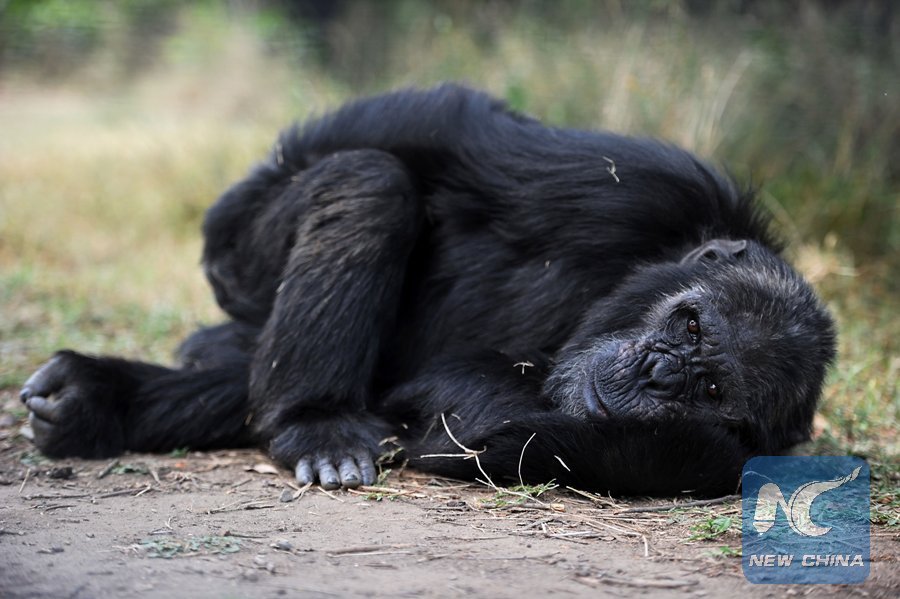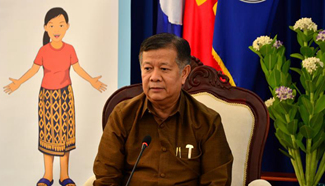
A picture taken on July 14, 2016 shows a rescued male chimpanzee in an enclosure at the Sweetwaters sactuary, Kenya's only great-ape sanctuary, within Ol-pejeta conservancy, near Nanyuki, in Laikipia county. (AFP/file Photo)
WASHINGTON, Oct. 11 (Xinhua) -- It appears our closest relatives, apes, might also be able to understand what others are thinking, even when it does not match reality, a finding indicating these animals may be more like us than we thought.
The capacity to tell when others hold mistaken beliefs has long been seen as unique to humans, according to the study published last week in the U.S. journal Science.
This awareness is formed in early childhood, usually before the age of five, and it marks the beginning of a young child's ability to fully comprehend the thoughts and emotions of others, a phenomenon called theory of mind, said the study by researchers at Duke University, Kyoto University and the Max Planck Institute for Evolutionary Anthropology.
This understanding requires grasping, on some level, that not all things inside our heads are real, explained study co-author Michael Tomasello, professor of psychology and neuroscience at Duke and director at the Max Planck Institute for Evolutionary Anthropology.
"It means understanding that there exists a mental world distinct from the physical world," Tomasello said in a statement.
To explore whether apes can also read minds, researchers studied three different species of apes -- chimpanzees, bonobos and orangutans -- as they watched two short videos, tracking their gaze using an infrared eye-tracker installed outside these animals' enclosures.
In one, a person in a King Kong suit hits a man from the behind, then hides himself in one of two large haystacks while the man watches. After the man leaves the scene through a door, the King Kong exits the haystack and runs away. In the final scene, the man reappears with a pole, apparently trying to find King Kong to fight back.
The second video is similar, except that the King Kong robs the man of a stone and that the man returns to the scene to retrieve the stone he saw King Kong hide in one of two boxes. But King Kong has stolen it behind the man's back and made a getaway.
To pass the test, the apes must predict that when the man returns, he will mistakenly look for the object where he last saw it, even though these animals themselves know it is no longer there.
In both cases, the apes stared first and longest at the location where the man last saw the object, suggesting they expected him to believe it was still hidden in that spot.
Their results mirror those from similar experiments with human infants under the age of two, according to the study.
"This is the first time that any nonhuman animals have passed a version of the false belief test," said Christopher Krupenye of Duke, who led the study along with comparative psychologist Fumihiro Kano of Kyoto University.
The findings suggest the ability is not unique to humans, but has existed in the primate family tree for at least 13 to 18 million years, since the last common ancestors of chimpanzees, bonobos, orangutans and humans, said Krupenye.
"If future experiments confirm these findings, they could lead scientists to rethink how deeply apes understand each other," he added.










